This website uses cookies so that we can provide you with the best user experience possible. Cookie information is stored in your browser and performs functions such as recognising you when you return to our website and helping our team to understand which sections of the website you find most interesting and useful.
Bordeaux 2020 – towards a new classicism
Bordeaux 2020 is a ‘truly exceptional, highly unique and utterly spectacular vintage’, finds Colin Hay, who unpicks the finer details of the vintage in this extensive vintage report.
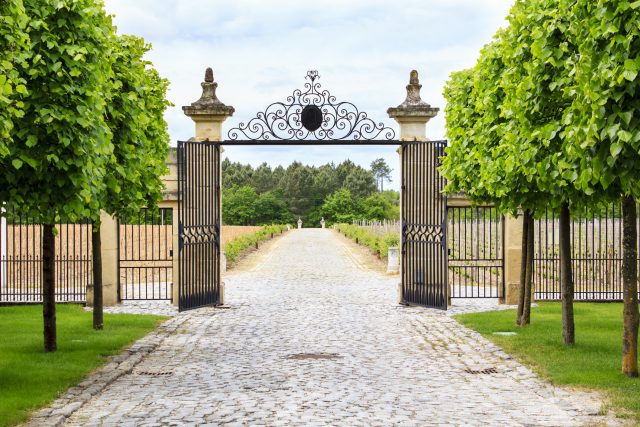
It may not be qualitatively the best that I have had the privilege to experience en primeur and it is certainly extremely heterogeneous. But this, for me, is the most exciting vintage I have ever tasted en primeur – and by some margin.
That this is so is due to two factors. The first is the specific, unique and singular character of these wines. At their best, they are bright, fresh, luminous, energetic, lithe and sinuous, elegant and refined and so thoroughly defined by, and expressive of, their individual terroirs.
The second is the very idea that such wines could have been made today in a context of such extreme climatic destabilisation and excess.
Indeed, there is fascinating paradox here. For in a sense these wines are profoundly classical. They embody almost perfectly our idealised sense of what Bordeaux should be able to offer; Michael Broadbent would have loved them. But, at the same time, they could not have been produced in any other decade or, indeed, any other vintage. And they may well turn out to be a one-off, though I really hope not.
I concluded my introduction piece on Bordeaux 2020, before having tasted a wine, with the following thought:
“The claim that 2020 is ‘potentially outstanding’ strikes me as entirely reasonable. But crucially, like 2019 and, above all 2018, it is also likely to prove heterogeneous. Given what we know about the climatic conditions, the best wines are likely to come from terroirs with both excellent drainage and the capacity to cope with hydric stress.
“There are terroirs of this kind throughout the leading appellations, but Pomerol (above all its hallowed plateau), the plateau of St Emilion and those parts of the appellation bordering Pomerol, the better terroirs of Pauillac and the strip of St Julien vineyards bordering the river seem the best placed to have produced excellent wines. We will see”.
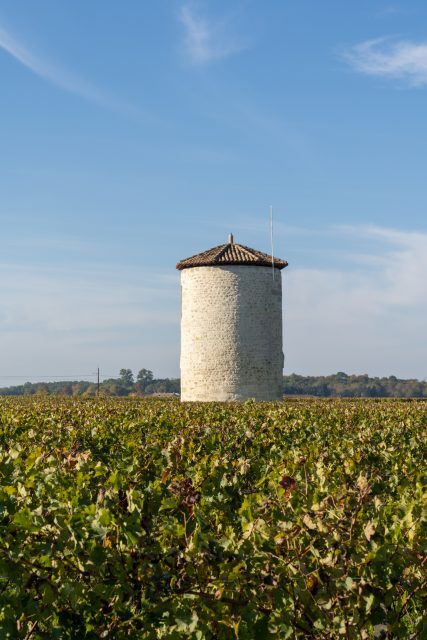
Having tasted well over 500 wines, first from samples sent to me in Paris and often over Zoom and, more recently, in the châteaux themselves, including all of the first growths, the premier grands crus classés (A and B) of St Emilion and the plateau Pomerols, those thoughts seem just about right.
But I would now add three small but significant caveats. The first related to St Estèphe. It was absent from my initial reflections largely because I was not quite sure what to expect. But it is now clear to me that it is one of the great highlights of the vintage on the left-bank. It seems to have coped very well with the extreme conditions and the wider dérèglement climatique (as Bordeaux wine-makers now prefer to re-describe the impact of global climate change on their vineyards) that it reflects.
That said, the somewhat lower levels of alcohol which are an important singularity of the vintage and that buck the more general trend have really helped St Estèphe to attain brilliance in 2020.
Margaux too has fared better than I had perhaps anticipated. This is in part a reflection of significant stylistic change in the wine-making (common throughout the region, but particularly present in the appellation over a number of years), reinforced by the specific characteristics of this unique vintage (notably, its brightness and florality).
Finally, Pomerol is in the end more heterogeneous than I would have imagined it to be – with the vineyards of the plateau producing a great diversity of truly brilliant wines; but with a steep drop off in quality as one descends to slightly less hallowed terroirs.
A little like 2018, the characteristics of the vintage and, indeed, its success are attributable to a strange – indeed miraculous – natural balancing act in which the excesses of the first part of the year were almost perfectly compensated by those of the second. In practically any other vintage, and in any precious decade, either half of the year would have been enough to destroy any chances of making great wine.
As Pierre-Olivier Clouet at Cheval Blanc pointed out to me, although no-one is particularly keen to draw attention to the fact, the climatic conditions of the second part of the vintage more closely resemble 2003 than any other previous vintage. The wines, thankfully, do not.
Indeed, for the second time in three years and arguably to an even greater extent than in 2018 climatic excess somehow conjured vinicultural balance. Those conditions were extreme. Mildew pressure in the first half of the year was, in many cases, worse than in 2018, even in vineyards like Palmer and Pontet Canet that were decimated by mildew two vintages earlier.
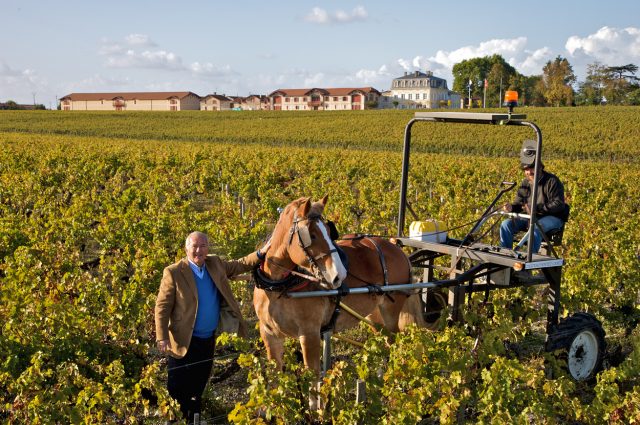
But supreme vigilance, extreme reactivity and a more preventative disposition combined with the sheer dedicated hard graft of vineyard workers (often working through the night and at weekends) led to significantly less damage.
At Palmer, for instance, the biodynamic vineyard was so saturated with water that the vast majority of anti-mildew treatments had to be administered by hand with the entire team walking up to 15 kilometres each whilst carrying the treatments on their back. Their reward is the knowledge that it was only through this coordinated and collective effort that what is a truly exceptional wine could have been produced. The final yield in 2020 was 31 hl/ha; it was, of course, 11 hl/ha in 2018. Add Covid to the picture and you begin to see how difficult a vintage this was to produce.
Overall production is, then, down – but only by around 10 per cent relative to the 10-year average (even if 2020 is the third lowest yielding vintage of the decade after 2013 and 2017). Yet much of that reduction is attributable less to mildew damage than to the small size and concentration of the grapes themselves. This, in turn, was due to a combination of the near drought-like conditions before harvest and, in fact, much more significantly (as explained to me by Philippe Bascaules at Chateau Margaux) to the small size of the grapes arising from the far from optimal conditions prior to veraison.
But mildew damage should not be underestimated. Very sadly, there is no Le Carré and no Les Astèries in this vintage and that is a direct consequence of mildew. This, then, is both a highly distinctive and an extremely strong vintage on both the left and the right bank.
Many have suggested that it is a Merlot vintage and, as such, a vintage that favours the right-bank. But I don’t quite see it in such terms. I think the premise and the inference are both problematic. Indeed, it’s slightly more complicated even than that. The premise (that this is a Merlot vintage), though credible, is in my view a crass over-simplification; the inference typically drawn (that this a right-bank vintage) is quite simply false.
At its best the Merlot (in the Médoc and the Graves as much as on the right-bank) is excellent and it plays a more structural role in the wines than is usual; but as ever, it is in the interaction between Cabernet and Merlot (and often Petit Verdot too) that greatness is forged. In a number of châteaux I got to taste the varietals separately; it is a very obvious thing to say, but in no case is it credible to think that an 100% mono-varietal wine would have been better than the final assemblage.
There are no easy generalisations here, not least as these interactions in the context of this vintage strike me as particularly terroir-specific. Petrus is a great wine in 2020 not because 2020 is a Merlot vintage and it is 100% Merlot, just as Lafleur is not a lesser wine in 2020 for being almost 50% Bouchet (the authentic and indigenous Cabernet Franc of the appellation).
Both are great (and they are very great indeed) because of their respective terroirs and the capacity of their terroirs in this vintage, aided by highly skilled vineyard management, to produce greatness from what is planted on it. And what applies to the plateau of Pomerol applies in each and every one of the great appellations of Bordeaux in 2020.
Many have suggested that this is a potentially great vintage. I’d go further. At its best this is a truly singular and also a truly exceptional vintage. There is an argument to be made that we are in a(mini) decade or so of highly distinctive and unique vintages (starting, I think, with 2015). That strikes me as entirely credible and, insofar as it is true, we know what is responsible – global climate change.
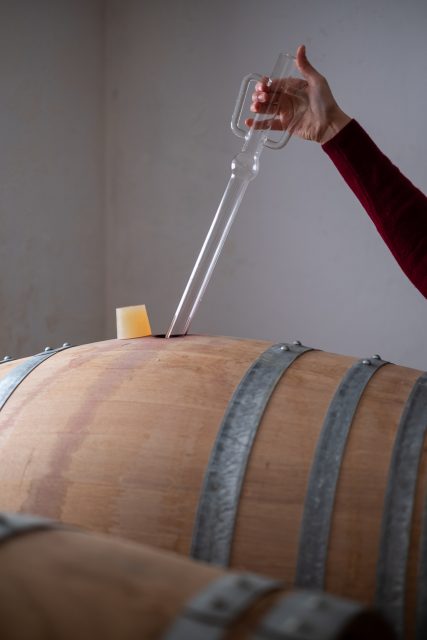
But even in the context of this growing inter-vintage differentiation, 2020 stands out for me as unique. The wine-making in undoubtedly better (even since 2015). But so too were the climatic conditions and, indeed, what the chateaux themselves are seeking (and able) to achieve. Taken together these factors explain quite a lot.
But what they also make clear is that it is both extremely difficult and not altogether helpful to compare 2020 with other vintage. It has, I suppose one might suggest, characteristics of other vintages: the freshness of 2016; the bright crunchiness and lift of 2017; the sheer substance, density and concentration of 2018, the elegance of 2019. But this gets nowhere close to capturing the essence of these wines and it would be to do a considerable injustice to them to reduce them to a list of previously recognised elements of former vintages.
For what these wines have most of all for me is luminosity, clarity, precision, detail, layered complexity and a sinuous or diaphanous quality in the mouth, accentuated by their exceptionally fine-grained and quite terroir-typical tannins and the brightness and freshness of the fruit.
All of this is reinforced by the focussed precision of the wine-making. It would have been very easy to remake 2003 in 2020; but in the end it is difficult to imagine two vintages from the last 2 decades that have less in common.
A lot of things have helped. Amongst them are: greater use of amphorae in vinification and/or élévage; less use of oak; more use of foudres and other larger format oak vessels for élévage; gentler and more cautious extraction (increasingly, passive infusion with no pumping over); cold soaks; more wariness of the possibility of higher alcohol wines ripping the raw wood tannins from the barrel; a greater desire to respect and express terroir specificity; and, quite frankly, much greater attention to the health of the soil and the biodiversity of the vineyard either with or without the conversion to organic and biodynamic wine-making.
These wines of the 2020 vintage are also amazingly floral and amazingly diverse in their florality (both aromatically and on the palate). My notes are peppered with floral descriptors that I have never used before to the extent that, at times, I found myself struggling to invent a new floral lexicon that had me wishing I’d studied more botany.
There is also the startling presence of secondary notes – notably cedar and (to a lesser extent) graphite – in wines (like the fabulous Montrose) where one would normally have to wait at least a decade to have such a clear indication of how the wine might evolve. That, too, is a combination of the wine-making, on the one hand, and the specific character of the vintage, on the other.
Although many of these wines will evolve glacially for decades, they are almost accessible already; and, more unusually still, the greater they are the more accessible they are now (despite extremely high levels of tannin). Relatedly, never before have I experienced so many en primeur samples that were so expressive aromatically, exhibiting such great aromatic complexity.
It is perhaps also worth drawing attention to my very strong sense that biodynamic wine-making and vineyard-management has brought, in this vintage at least (though probably more generally), an added purity, energy, brightness and precision to many wines. In so doing it reinforces the stylistic turn towards a new modernity in Bordeaux that I am very keen to celebrate and to draw attention to. It also reinforces the natural freshness, brightness and sheer ebullience and energy of this vintage.
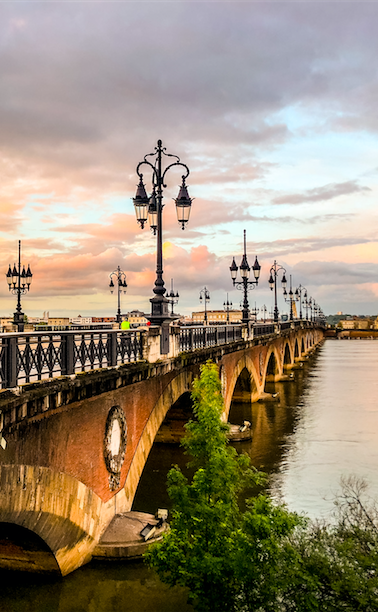
These wines are in the end very easy to appreciate and, for a while as I tasted through successive batches of samples, I asked myself whether they were not in fact too easy, perhaps lacking the complexity of true greatness. I know, too, that a number of wine-makers as they followed the development of their own wines were posing themselves exactly the same question (they told me).
My conclusion, like theirs, is in the end a categorical no. The best wines of the 2020 vintage have a wonderful textural as well as aromatic complexity even if it is sometimes not as readily discernible as it might have been had they been made rather differently (or in a different epoch).
They are accessible and approachable and their sheer elegance and luminous character renders their structure, density and concentration at times difficult to capture. But it is there; indeed, it is there in abundance. Natural beauty and harmony is easily mistaken for a lack of complexity. But for me at least these wines are profound. They have balance and poise, tension, compact fine-grained tannins and considerable density even if it is sometimes difficult to reconcile that with their shimmering levity and luminous clarity.
That luminosity, however, comes with a risk, at least for some – a risk that goes some way to explaining the heterogeneity of this vintage. For terroir is much in evidence in 2020. The clear and luminous character of these wines shines a very bright, penetrating and potentially quite probing light on the details of the mid-palate especially – and sometimes, alas, there is simply not too much to illuminate.
Clarity is a terroir-amplifier. And that, again, is reinforced by both the character of the vintage (in which, for instance, the oak is easily absorbed) and the wine-making and élévage (which typically now relies on less oak anyway). That in itself is exciting and many have been calling for this for a long time. But with clarity and less oak, there is less disguise too. Any fault, any rusticity, above all any lack of interest is cruelly exposed. 2020 is a vintage in which there is nowhere to hide and that is why, in the end, it is so uneven.
I will return to that in my more detailed profiles of individual appellations with full tasting notes that will be published over the next few weeks.
Let me conclude for now with just a few simple and general reflections in a vintage in which generalisations are very difficult:
- This is not a Merlot vintage, even if the Merlot is often exceptional;
- This is not a right-bank vintage any more than it is a left-bank vintage;
- It is a terroir-amplifying vintage and heterogeneous precisely because of that;
- But it also heterogeneous because different types of terroir were better able to respond to the climatic challenges the vintage presented;
- In the Médoc, St Julien (especially) and Pauillac (to a lesser extent) are more homogeneous, but not in my view because they were particularly advantaged by the characteristics of the vintage, but simply because the quality of their terroirs is more even;
- In fact, it is in St Estèphe and Margaux where the wines are strongest relative to the quality of their terroirs and where the wines taste most strongly of both the appellation and individual terroirs within it;
- In some respects, this was an even more challenging vintage in the Graves and Pessac-Léognan and it is only really the very best wines on the very best terroirs that excelled – though excel they did;
- Turning to the right bank, there are many brilliant and brilliantly diverse wines in St Emilion that sing eloquently of their terroirs;
- They represent the culmination of at least half a decade of recalibration and reassessment resulting in something of a ‘climat’-isation of St Emilion;
- This new modernity is in fact present to some extent in each of the leading appellations, but it is most evident on the left-bank in St Emilion and on the right in Margaux;
- Pomerol has, as ever, produced on the plateau some utterly beautiful and compelling wines of timeless elegance and finesse yet exceptional depth and concentration;
- But off the plateau, many wines lack brightness, freshness and mid-palate delineation – they taste and feel like hot-vintage wines;
- Amongst the satellite appellations, if one can call them that, there are many highlights on the calcaire terroirs of Castillon Côtes de Bordeaux and on the plateau of Neac in Lalande de Pomerol and in Moulis-en-Médoc and Haut-Médoc on the left bank – these wines deserve an attention they are very rarely given;
- Overall this is an exceptional and unique vintage that refines as it defines Bordeaux’s search for a new classicism.
At the time of writing, release prices remain reasonable. And this is very good news indeed.
For me this is a unique and exceptional vintage; a vintage for Bordeaux lovers to indulge in; a great vintage and a very great tribute to the quality, skill and endurance of those who have made it in exceptionally trying and difficult conditions. If this is the new classicism then I, for one, am a fan.

